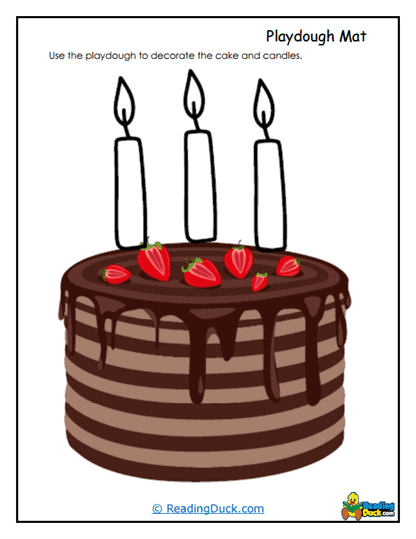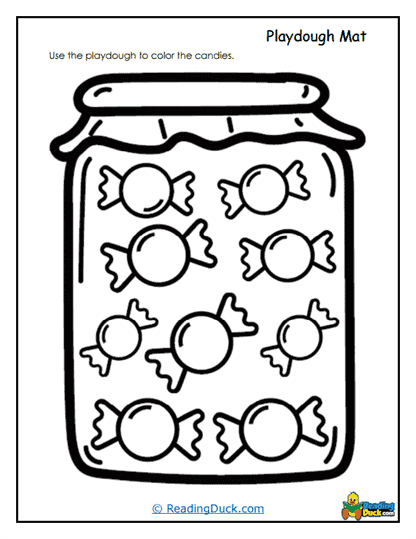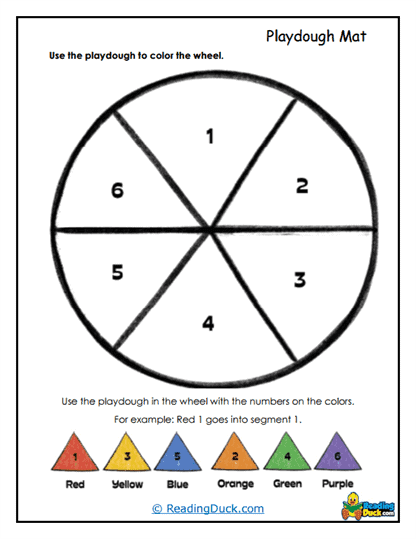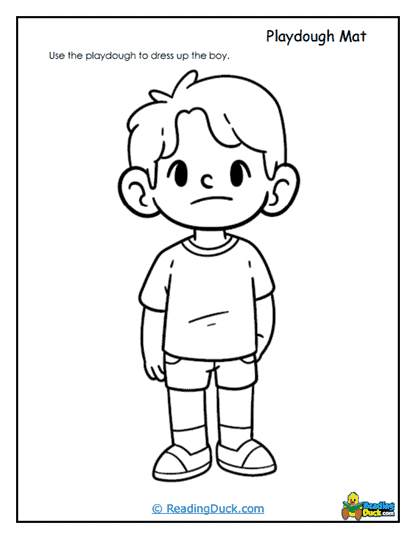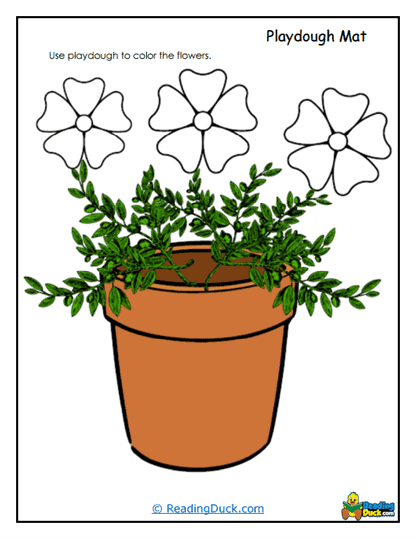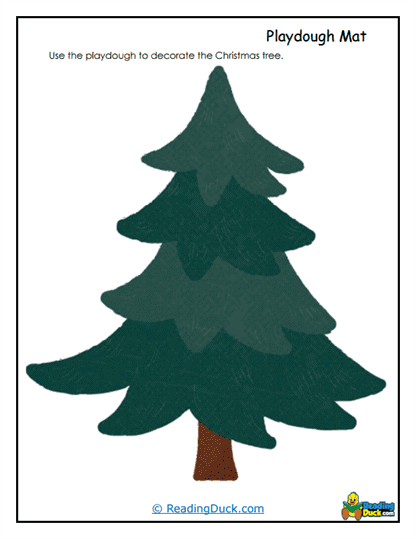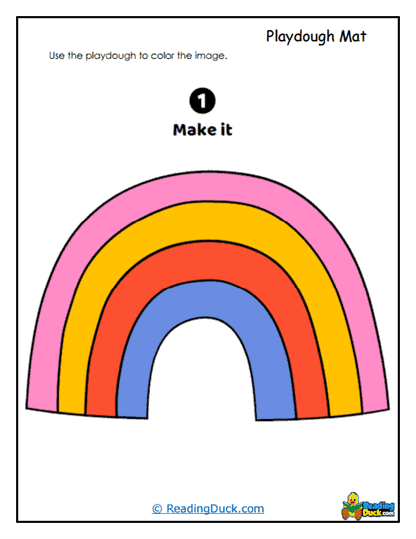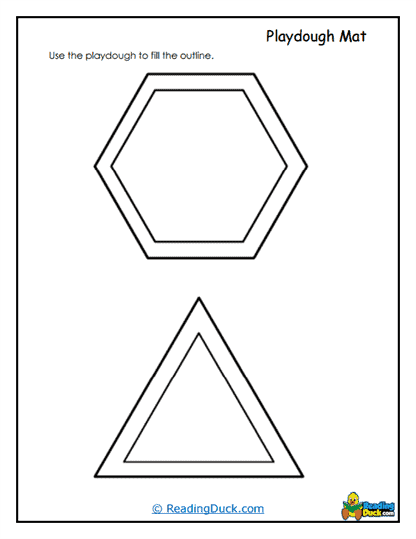Playdough Mats Worksheets
About Our Playdough Mats
Our Playdough Mats Worksheets collection is an engaging and versatile resource designed to enhance fine motor skills in young learners. This collection features a wide range of printable playdough mats that encourage children to explore and create through tactile play.
Some worksheets provide pre-drawn images for students to fill in with playdough, offering a structured yet creative activity, while others challenge them to recreate the images entirely from scratch, fostering imagination and independent thinking.
Each worksheet is available in PDF format, making them easily accessible for viewing, downloading, and printing. This ensures that teachers and parents can conveniently integrate these activities into their daily routines, offering a flexible and practical solution for enhancing early childhood education.
What are Playdough Mats Worksheets?
Playdough Mats Worksheets are educational tools specifically designed to support early childhood development through hands-on, sensory-rich activities. These mats typically feature simple outlines or prompts that guide children in using playdough to complete or recreate images. The primary purpose of these worksheets is to develop essential fine motor skills, which are crucial for young children as they prepare for tasks such as writing, cutting, and manipulating small objects.
In addition to fine motor development, Playdough Mats Worksheets also help children practice:
- Spatial awareness: Understanding how objects relate to each other in space, which is vital for both reading and math.
- Hand-eye coordination: Enhancing the ability to coordinate visual input with hand movements, crucial for tasks like writing and drawing.
- Creativity: Encouraging children to use their imagination, whether they are filling in pre-drawn images or creating their own designs from scratch.
These skills are fundamental for pre-reading and other academic pursuits, laying the groundwork for future learning. Playdough Mats Worksheets offer a perfect blend of structure and creativity, allowing children to express themselves while developing the foundational skills necessary for success in school and beyond.
How Playdough Mats Enhance Sensory Learning
Playdough Mats Worksheets are an invaluable tool for enhancing sensory learning in early childhood education. Sensory learning involves engaging multiple senses to help children connect physical actions with cognitive processes, making learning more holistic and effective. Through the tactile experience of manipulating playdough on these mats, children engage their sense of touch in a meaningful way. This sensory engagement is particularly beneficial in early childhood when the brain is rapidly developing and forming connections between different areas of learning.
When children work with playdough, they:
- Press, roll, and shape playdough to fit within the outlines on the mats or to create images from scratch, actively participating in a learning process that integrates both their hands and minds.
- Strengthen fine motor skills, which are critical for everyday tasks, while also reinforcing neural pathways that support memory, attention, and cognitive development.
- Build muscle memory and improve coordination through the repetitive nature of these activities, both of which are essential for later academic tasks such as writing.
For children who may benefit from additional sensory input, such as those with sensory processing disorders, these playdough activities can be particularly beneficial. The texture and resistance of playdough provide sensory feedback that helps these children regulate their sensory experiences. This regulation makes the learning process more comfortable and effective, as it allows them to engage fully without becoming overwhelmed. Moreover, sensory engagement through playdough mats makes learning more memorable and enjoyable for all young students. The tactile sensations associated with playdough activities can create strong, positive associations with the concepts they are learning, making these experiences stick in their minds longer.
Incorporating Playdough Mats into Thematic Units
Playdough Mats Worksheets can be seamlessly integrated into a variety of thematic units, enhancing the overall learning experience by connecting tactile play with broader educational themes. For instance, in a unit focused on "Animals," playdough mats featuring animal shapes or habitats can be used alongside stories about wildlife, songs about animals, and crafts that explore different species. This thematic approach not only reinforces scientific concepts but also allows children to express their understanding through creative play, making learning more dynamic and interactive.
Other effective thematic ideas include:
- Seasons: Children can use playdough mats to create images of seasonal symbols such as snowflakes, leaves, or flowers. Pair these activities with lessons on weather patterns, stories that reflect the changes in nature, and art projects that allow children to explore the colors and textures associated with different seasons. This approach helps children understand and appreciate the cyclical nature of the world around them, deepening their connection to their environment.
- Alphabet Exploration: Playdough mats that feature letters or letter-related images can be an excellent addition to a literacy-focused unit. Children can shape the letters with playdough, reinforcing their letter recognition skills while also practicing the fine motor control needed for writing. Pairing these mats with alphabet songs, phonics games, and letter tracing activities creates a well-rounded literacy experience that supports both pre-reading and writing skills. This comprehensive approach helps children connect the abstract symbols of letters with their physical forms, making the learning process more concrete and accessible.
Teachers can also extend the learning experience by pairing these mats with other manipulatives or educational tools:
- Numbers: Use counting bears with playdough mats to practice counting and number recognition in a hands-on way.
- Nature: Incorporate natural materials like leaves or stones into a "Nature" theme, allowing children to explore textures and patterns as they create with playdough. These activities not only enhance the learning experience but also encourage children to explore and interact with the world around them in new and creative ways.
By incorporating Playdough Mats Worksheets into thematic units, educators can create a cohesive and meaningful learning experience that reinforces concepts across different subjects, including science, literacy, and art. This integrated approach helps children make connections between different areas of learning, deepening their understanding and making the educational experience more engaging and enjoyable. The versatility of these mats makes them an ideal tool for any classroom, allowing teachers to tailor their lessons to the needs and interests of their students.
Supporting Social and Emotional Development
In addition to their academic benefits, Playdough Mats Worksheets play a crucial role in supporting social and emotional development in young children. Working with playdough can be a calming activity that allows children to manage their emotions and develop self-regulation skills. The tactile nature of playdough provides a soothing sensory experience that can help children relax and focus, particularly when they feel overwhelmed or anxious. As they work through the challenges of completing or creating images on the mats, children also build patience and persistence, learning to take their time and approach tasks methodically.
Moreover, these worksheets can be used in both individual and group settings, offering opportunities for cooperative play. When children work together on playdough activities, they practice important social skills such as:
- Sharing: Learning to take turns and divide resources, which fosters a sense of fairness and cooperation.
- Communication: Discussing ideas and plans with peers, which enhances language development and social interaction.
- Teamwork: Collaborating to achieve a common goal, which helps build trust and a sense of community within the classroom.
Playdough activities also encourage persistence, as children often need to try multiple times to achieve the desired result. This process of trial and error helps them develop resilience and a growth mindset, teaching them that mistakes are a natural part of learning and that perseverance leads to success. These experiences contribute to a child’s overall well-being, fostering a positive self-image and a sense of accomplishment. As children see the results of their hard work, they build confidence in their abilities and learn to approach challenges with a positive attitude.
By using Playdough Mats Worksheets, educators can support not only the academic growth of their students but also their social-emotional development. These worksheets offer a holistic approach to learning, recognizing that a child's emotional well-being is just as important as their cognitive skills. Through the calming, cooperative, and persistent nature of playdough activities, children develop the emotional tools they need to thrive both inside and outside the classroom. This balanced approach ensures that children are not only learning the necessary academic skills but also growing into well-rounded individuals who are equipped to handle the social and emotional challenges they will encounter as they continue their educational journey.
